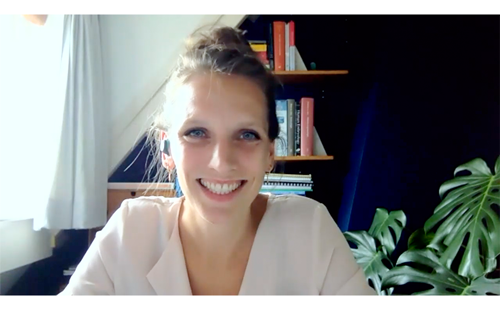Surgery remains a mainstay of treatment in primary hyperparathyroidism (PHPT), the new guidelines for management provide alternative options for patients in which surgery is contraindicated. We were delighted to speak to Prof. Aliya A. Khan (McMaster University Medical Centre, Hamilton, Canada) around the current management of PHPT, the updates to management in the new guidelines and the unmet needs that still remain.
The abstract ‘New guidelines on the management of primary hyperparathyroidsm‘ was presented at WCO-IOF-ESCEO 2023, 4-7 May 2023.
Questions
- How is primary hyperparathyroidism (PHPT) currently managed? (0:25)
- Please could you describe what updates to management are included in the new guidelines? (1:58)
- What unmet needs still remain and what does the future for PHPT management look like? (3:20)
Disclosures: Aliya Khan discloses consulting for Amgen and Amolyt; receiving grant/research support from Ascendis, Amolyt, and Calcilytix; serving on advisory boards for Amgen; and receiving honoraria from Amgen.
Support: Interview and filming supported by Touch Medical Media Ltd. Interview conducted by Victoria Jones.
Filmed in coverage of the 2023 WCO-IOF-ESCEO Annual Meeting.
Click here for more content on thyroid disorders.
Transcript
How is primary hyperparathyroidism (PHPT) currently managed? (0:25)
So management is curative with surgery and surgery is always appropriate in the presence of a confirmed diagnosis. So if confirmed that the patient has high serum calcium, corrected for albumin, or elevated ionized calcium in the presence of an upper normal or clearly elevated PTH and we’ve excluded other factors that can look like hyperparathyroidism, such as the use of hydrochlorothiazide, or lithium or familial hypocalciuric/hypercalcemia, which is due to an inactivating mutation of the calcium-sensing receptor in the parathyroid glands and also in the kidneys. Then once we’ve excluded that and we know that our patient doesn’t have co-morbidity or contraindications for surgery, then we can always send them for surgery. But in some patients, surgery is not an option. They might have a contraindication for surgery, or they might be older and have a comorbidity, or they might just have mild hypercalcemia and they don’t want to go for surgery. In the new guidelines, we described which patient population could be offered alternative options to surgery, and what are those alternative options and if the patient is reluctant to proceed with surgery, or if surgery is too risky due to co-morbidity, then we could certainly look at medical intervention.
Please could you describe what updates to management are included in the new guidelines? (1:58)
This is a very good question, and medical intervention includes stopping drugs such as hydrochlorothiazide, and we recommend that the hydrochlorothiazide be stopped. Often patients are taking hydrochlorothiazide with their antihypertensive and we want to ensure that we carefully look at their medication pill bottles, making sure that they don’t have hydrochlorothiazide added in with the antihypertensive, so that should be stopped. Then we want to be able to provide skeletal protection with a bisphosphonate or denosumab, and we can lower calcium with cinacalcet. Cinacalcet is a calcium mimetic agent and this can lower serum calcium and PTH and in the phase 3 trial that we completed, patients were evaluated and they were given cinacalcet in comparison to placebo in patients with primary hyperparathyroidism and cinacalcet dropped the PTH and the calcium level – calcium level is actually normalized. In our new guidelines, we said that cinacalcet can be used to lower serum calcium, and we don’t need to normalize calcium. We just want it to be it could be in the upper mildly upper normal reference range, but below 2.85 millimoles per litre.
What unmet needs still remain and what does the future for PHPT management look like? (3:20)
That’s really important, so we do need to evaluate medical options with fracture as an endpoint because right now that has not been done and the BMD fracture risk relationship is not well understood in patients with primary hyperparathyroidism and we also need to have more research on the non-classical manifestations of primary hyperparathyroidism such as the impact on cardiovascular disease and neurological features, as we also need to understand normal calcimic hyperparathyroidism further – what is the best intervention for this condition and we don’t really have good evidence right now to be able to make recommendations for intervention for normal calcaemic hyperparathyroidism.
Subtitles and transcript are autogenerated.










